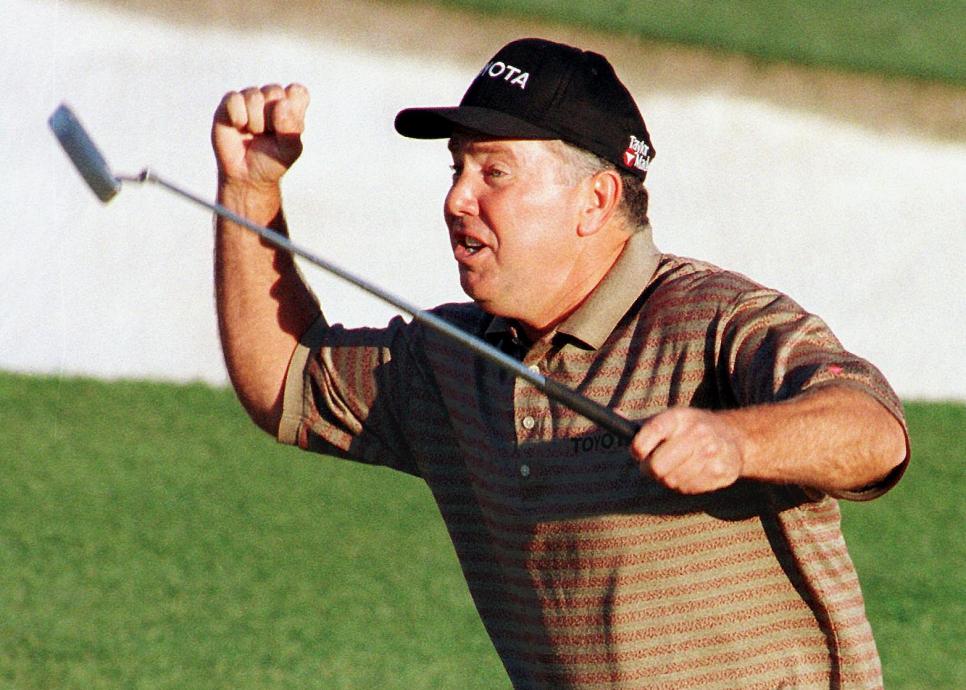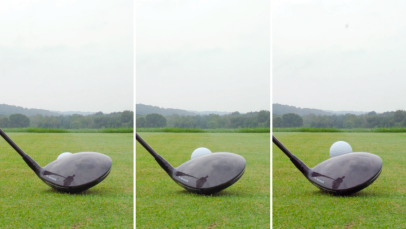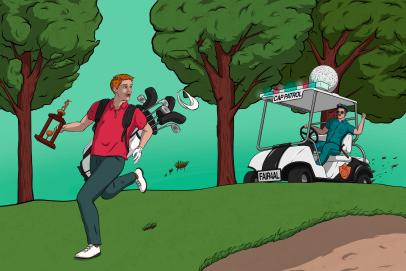Healthy Golfer: Feeling Banged Up? – Australian Golf Digest

- by Admin
- June 25, 2024

Pulls, tears, bruises, inflammation – just some of the wonderful side-effects of loving a sport so much that you can’t walk away from that second bucket of range balls or an extra nine after a day of 36 holes. That’s OK, we’ve got your back – and your shoulders, knees, hips and neck. Here’s a guide to potential treatments for damage to the body’s soft tissue – everything from self-massage to Star Wars-like laser blasts to radio waves and the time-honoured tub of ice.
This information comes from research by Golf Digest fitness adviser Ralph Simpson, a physical therapist and former trainer on the PGA Tour. Please consult your doctor before trying any of these treatments.
Heat/cold
Extreme cold applied to the skin can slow inflammation and heat can increase blood flow, which might accelerate healing. Both reduce pain/achiness.
Note: There is research showing ice to be effective in the first 72 hours to reduce swelling from acute soft-tissue injuries (bruises, sprains, etc.), but heat might make a swollen area temporarily worse. Either can burn if used without proper skin protection for too long (more than 15 minutes).
Foam rolling myofascial release
Pressure is applied to the stiff or tight muscular area in the hopes of increasing blood flow and range of motion and countering the effects of microtears to muscle, fascia, etc. It’s a convenient, cheap and effective technique for treating soreness and getting warmed up for golf.
Note: Pressure applied directly to a sprain or bruise where you feel pain can aggravate things, and some injuries are too deep within the body for massage to be effective. You might need a therapist to treat hard-to-reach areas.
Dry needling
Long, thin needles pierce the skin and the muscle to release painful myofascial trigger points. Pain reduction and improvement in range of motion can come rapidly after a treatment. This is great for issues with the muscles of the spine (areas too deep to easily reach by yourself) that are often inflamed by golf swings, including the trunk muscles and hip flexors.
Note: This requires a skilled professional for application and generally isn’t used as a stand-alone treatment. Insurance might not cover the application. Soreness and bruising can occur where the needles enter the skin.
NSAIDs
Non-steroidal anti-inflammatory drugs such as ibuprofen or naproxen sodium are effective in relieving inflammation, particularly for minor issues. It doesn’t get any easier for golfers than to pop a pill to combat pain, and even prescription-strength NSAIDs are fairly inexpensive.
Note: The longer you use them, the greater their potential to damage the kidneys and gastrointestinal components. They also have caused cardiovascular incidents (heart failure, strokes).
Acetaminophen
These medications are effective at reducing pain in the short term when administered correctly and can relieve common issues from playing golf such as delayed onset muscle soreness (DOMS). They’re cheap and easy to use.
Note: They’re not effective at reducing inflammation but have been shown to be more successful and have fewer side effects than NSAIDs for extremity injuries. They can damage the liver if used at the same time as alcohol. Users also have reported stomach issues and allergic reactions. If you’re wondering about combining acetaminophen and NSAIDs, that seems more effective in dental and post-surgical pain treatment than acute musculoskeletal injuries caused by golf. Acetaminophen alone is the better option.
Low-level Class III laser therapy
Short bursts of light (five to 10 minutes) to an injured area have been shown to reduce tendon inflammation such as golfer’s elbow. The treatments are quick and painless.
Note: It’s generally not used as a stand-alone treatment, and health insurance typically does not cover it.
Gels & ointments
There’s nothing worse than feeling a pinch in your body or, worse, spraining a muscle halfway through your round. What can help in those situations are products like Fisiocrem Solugel, a topical anti-inflammatory gel that can be applied to the skin to help relieve painful or aching muscles.
Note: It’s ideal for symptomatic relief from muscle injury, sprains, strains, muscle inflammation and post-exercise recovery.
Cold plunges
This might be the best new thing for self-care. Submerging in water colder than 10 degrees for five minutes a handful of times each week has been shown to reduce inflammation, reduce stress and speed recovery from golf-course soreness.
Note: This is the cheapest, easiest (and perhaps) safest treatment of all. Just don’t sit in cold water for too long. Pruning will be the least of your worries.
Getty images: Chris Condon
The Latest News
-
September 20, 2024Former Italian galloper in Caulfield Cup and Melbourne Cup bid
-
September 20, 2024Who will replace Graham Arnold as Socceroos coach? Candidates to take on Australia top job | Sporting News Australia
-
September 20, 2024Graham Arnold departs as Head Coach of the Subway Socceroos
-
September 20, 2024Travis Head powers Australia to big win in first ODI | Betting Site
-
September 20, 2024Palestinians in Australia left in limbo as visa doesn’t allow for work or study rights





